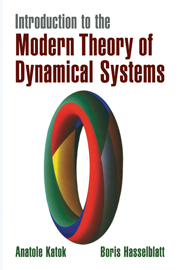Book contents
- Frontmatter
- Contents
- PREFACE
- 0 INTRODUCTION
- Part 1 Examples and fundamental concepts
- 1 FIRST EXAMPLES
- 2 EQUIVALENCE, CLASSIFICATION, AND INVARIANTS
- 3 PRINCIPAL CLASSES OF ASYMPTOTIC TOPOLOGICAL INVARIANTS
- 4 STATISTICAL BEHAVIOR OF ORBITS AND INTRODUCTION TO ERGODIC THEORY
- 5 SYSTEMS WITH SMOOTH INVARIANT MEASURES AND MORE EXAMPLES
- Part 2 Local analysis and orbit growth
- Part 3 Low-dimensional phenomena
- Part 4 Hyperbolic dynamical systems
- Appendix: BACKGROUND MATERIAL
- NOTES
- HINTS AND ANSWERS TO THE EXERCISES
- REFERENCES
- INDEX
2 - EQUIVALENCE, CLASSIFICATION, AND INVARIANTS
Published online by Cambridge University Press: 05 June 2012
- Frontmatter
- Contents
- PREFACE
- 0 INTRODUCTION
- Part 1 Examples and fundamental concepts
- 1 FIRST EXAMPLES
- 2 EQUIVALENCE, CLASSIFICATION, AND INVARIANTS
- 3 PRINCIPAL CLASSES OF ASYMPTOTIC TOPOLOGICAL INVARIANTS
- 4 STATISTICAL BEHAVIOR OF ORBITS AND INTRODUCTION TO ERGODIC THEORY
- 5 SYSTEMS WITH SMOOTH INVARIANT MEASURES AND MORE EXAMPLES
- Part 2 Local analysis and orbit growth
- Part 3 Low-dimensional phenomena
- Part 4 Hyperbolic dynamical systems
- Appendix: BACKGROUND MATERIAL
- NOTES
- HINTS AND ANSWERS TO THE EXERCISES
- REFERENCES
- INDEX
Summary
In the previous chapter in the process of studying various examples we encountered a number of useful concepts related to the asymptotic behavior of dynamical systems. Our list includes so far the growth of the number of periodic orbits, their spatial distribution (for example, density), topological transitivity, minimality, α- and ω-limit sets, and topological mixing. This list will be considerably extended and systematized in Chapters 3 and 4. Before doing that, we are going to look into the problem of studying the asymptotic behavior of smooth dynamical systems from a different angle.
Smooth conjugacy and moduli for maps
a. Equivalence and moduli. We can consider the properties in question as some features of the global orbit structure independent of a particular choice of coordinates. From the global point of view a coordinate change is given by a diffeomorphism (in the case of a smooth structure) or a homeomorphism (for the topological situation) between the phase spaces. Thus we can introduce natural equivalence relations between dynamical systems associated with various classes of coordinate changes and interpret the problem of the description of the orbit structure as the classification of dynamical systems with respect to those equivalence relations.
- Type
- Chapter
- Information
- Introduction to the Modern Theory of Dynamical Systems , pp. 57 - 104Publisher: Cambridge University PressPrint publication year: 1995



